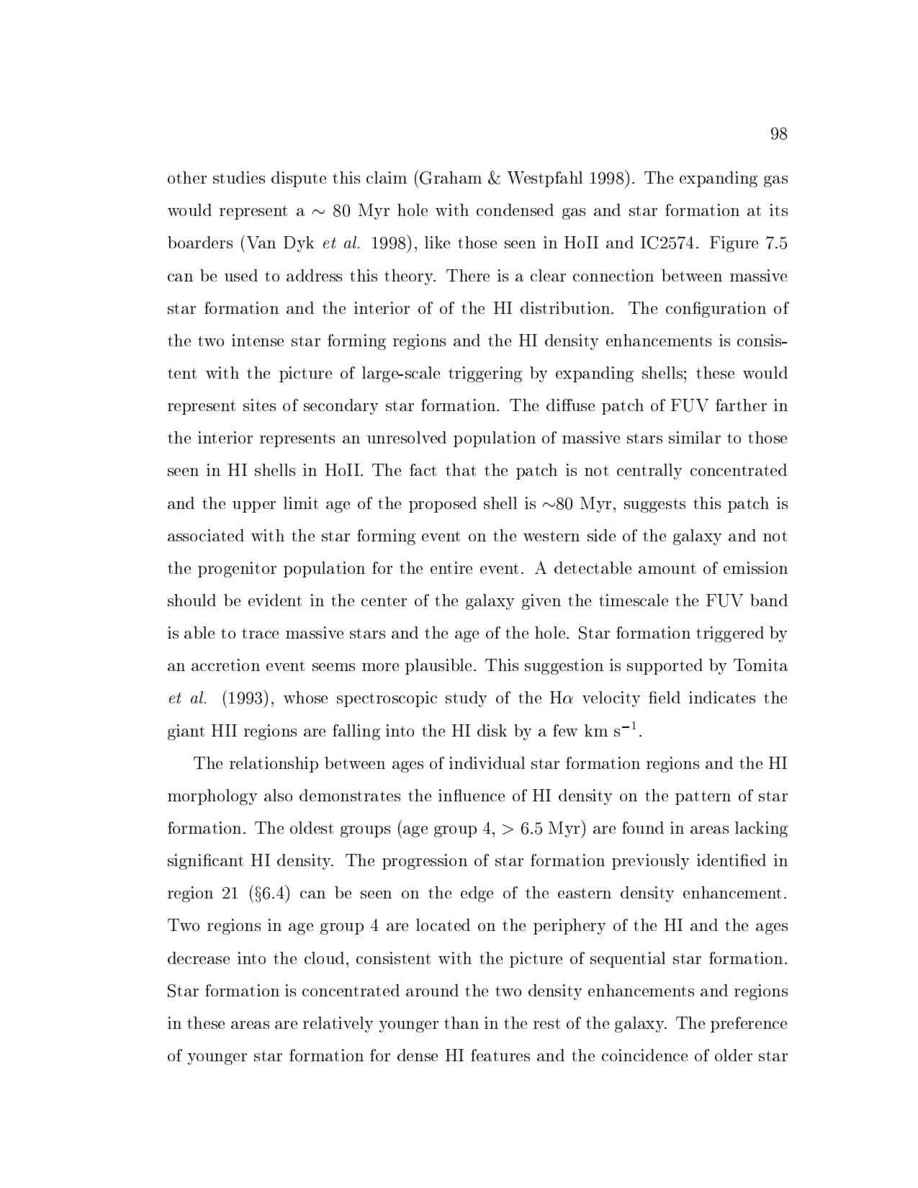
98
other studies dispute this claim Graham & Westpfahl 1998. The expanding gas
would represent a
80 Myr hole with condensed gas and star formation at its
boarders Van Dyk
et
al.
1998, like those seen in HoII and IC2574. Figure 7.5
can be used to address this theory. There is a clear connection between massive
star formation and the interior of of the HI distribution. The con guration of
the two intense star forming regions and the HI density enhancements is consis-
tent with the picture of large-scale triggering by expanding shells; these would
represent sites of secondary star formation. The di use patch of FUV farther in
the interior represents an unresolved population of massive stars similar to those
seen in HI shells in HoII. The fact that the patch is not centrally concentrated
and the upper limit age of the proposed shell is
80 Myr, suggests this patch is
associated with the star forming event on the western side of the galaxy and not
the progenitor population for the entire event. A detectable amount of emission
should be evident in the center of the galaxy given the timescale the FUV band
is able to trace massive stars and the age of the hole. Star formation triggered by
an accretion event seems more plausible. This suggestion is supported by Tomita
et
al.
1993, whose spectroscopic study of the H velocity eld indicates the
giant HII regions are falling into the HI disk by a few km s
,
1
.
The relationship between ages of individual star formation regions and the HI
morphology also demonstrates the in uence of HI density on the pattern of star
formation. The oldest groups age group 4, 6.5 Myr are found in areas lacking
signi cant HI density. The progression of star formation previously identi ed in
region 21
x
6.4 can be seen on the edge of the eastern density enhancement.
Two regions in age group 4 are located on the periphery of the HI and the ages
decrease into the cloud, consistent with the picture of sequential star formation.
Star formation is concentrated around the two density enhancements and regions
in these areas are relatively younger than in the rest of the galaxy. The preference
of younger star formation for dense HI features and the coincidence of older star
